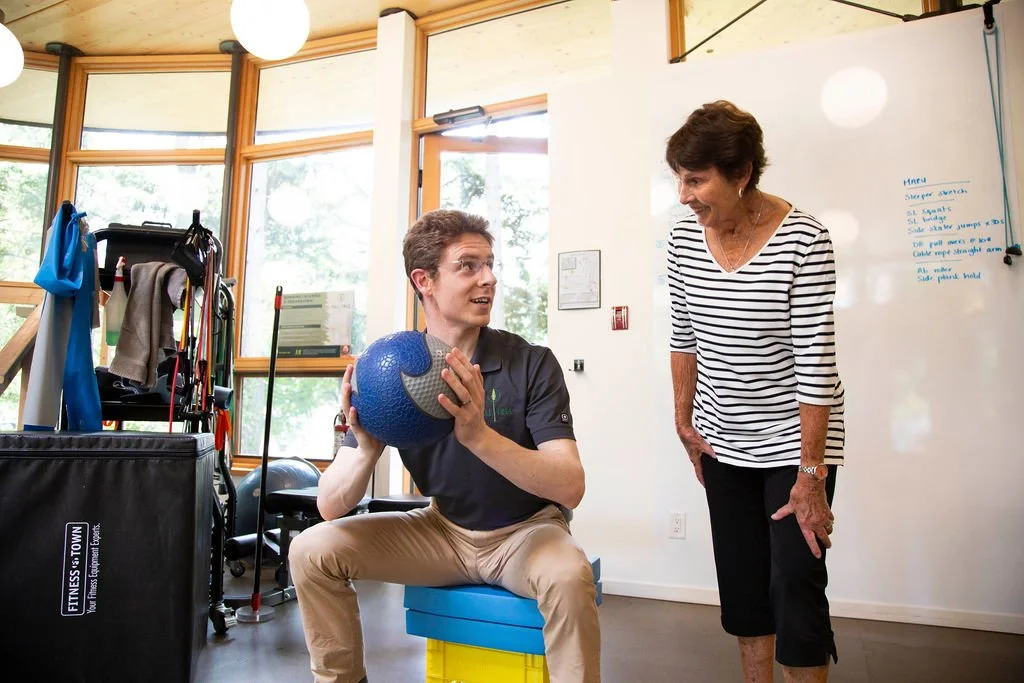How to Recover From Back Pain
Causes, Solutions, and Steps to Recovery
Data shows that global searches for the term “back pain” are at an all-time high. But with over six billion results returned on Google alone, how do we distinguish the accurate, helpful information?
Fortunately, you’ve come to the right place. Our professional health nerds study the evidence so we can share reliable truths and information to help get you back on track.
Back pain is common
Up to 80% of the population will experience back pain in their lifetime. Most of us have “put our back out” at some point. The good news is that most cases resolve on their own in a matter of weeks, and it’s rare that low back pain involves worrying causation such as fracture, infection, or cancer (less than one percent of cases, in fact).
It doesn’t take much for injuries to happen
At the root of musculoskeletal injury is the critical concept of load vs. capacity. All tissues have a capacity to accomplish certain physical demands (i.e., load).
When the body is exposed to an unaccustomed demand, such as when the load exceeds capacity, injury can occur. This is often a case of too much too soon. Past physical activity, the duration and repetition of the activity, the recovery period, and lifestyle factors all impact our capacity for tasks.
Imagine you’re helping a friend move furniture from a U-haul into their apartment. Two hours of lifting and carrying later, you experience an acute bout of back pain. When was the last time you lifted objects that heavy, that repetitively, for that amount of time? It may be that your body hasn’t had regular exposure to lifting with that intensity for your capacity to handle that load.
Or, maybe you’re strong and can lift a lot at once, but you haven’t been training to handle repetitive or sustained carrying with little rest. Stress, poor sleep, and diet can all also dampen capacity.
Useful truths and steps to recovery
Immediately after an episode of back pain, try to find a comfortable or tolerable position. Take a few breaths, and remember, intense pain is not necessarily equal to intense injury.
“Motion is lotion” (in other words, movement can help with mobility). Avoiding activities and bed rest are actually not helpful. In the first day or so, it makes sense to avoid positions and activities that aggravate your back, but it is important to start to move and resume normal activities. The folks who get their body moving to any capacity early on have better outcomes compared to complete rest. Movement can involve anything from short walks to very subtle movements of the low back (e.g., cat-cow). There’s no “best” exercise for back pain. Anything to get you moving is shown to be beneficial, so if you’ve found something that is tolerable or feels good, that’s a great place to start!
Steadily increase your movement. Keep building your tolerance for what you can handle. Continue exploring new ranges of motion and directions, and start doing activities that were previously too aggravating. Gradually these motions and activities will become more and more tolerable. Even if the level of discomfort remains similar, but you find you’re capable of doing more, you are still making progress. If pain is very acute, it is useful to transition between your comfortable resting positions to try out tolerable movement throughout the day. This steady progressive approach will shift your momentum towards getting back to your normal routine.
Exercise is great and safe for back pain. Pick something you enjoy and gradually restart. You can expect to feel some soreness when you first start out. This is your muscles and body getting used to working. It doesn’t necessarily indicate anything is wrong. Remind yourself that you can be sore but safe.
“Motion is lotion (in other words, movement can help with mobility).”
Should you get a scan?
Scans such as an MRI or X-ray are only required in about two to three percent of cases of low back pain. People often think a scan is required to diagnose and guide treatment, but the research suggests most of the time, there is not a specific structure linked to an episode of back pain. If you’re worried, a visit to your healthcare provider can help you figure out the best steps.
When to seek help
If you’re having trouble managing your pain or find it challenging to return to regular activities, it’s a good idea to seek assistance. Everyone’s experience with back pain is different. A physiotherapist will listen to understand your unique challenges and the specific activities that you want to get back to. They can work with you to come up with a tailored plan to help ease your symptoms and provide a recovery timeline so you can get back to doing what you want to do.
Remember, even severe pain can respond well to simple movements (and a little help from a healthcare professional if you don’t feel you can manage it on your own).



































